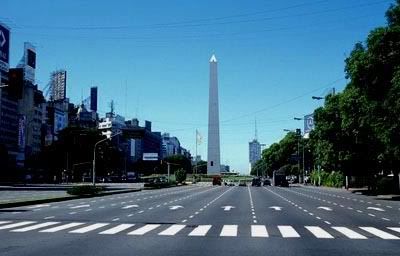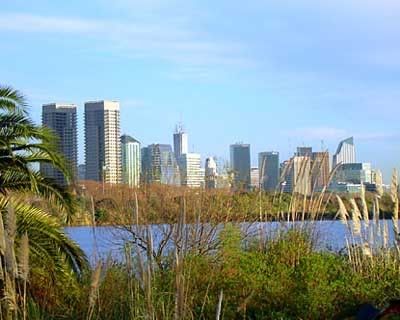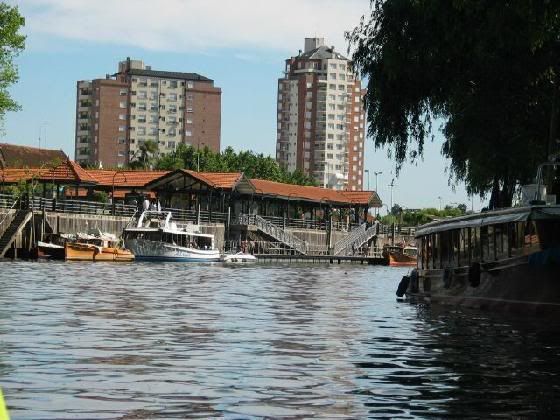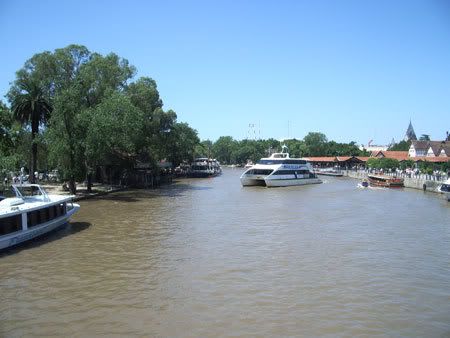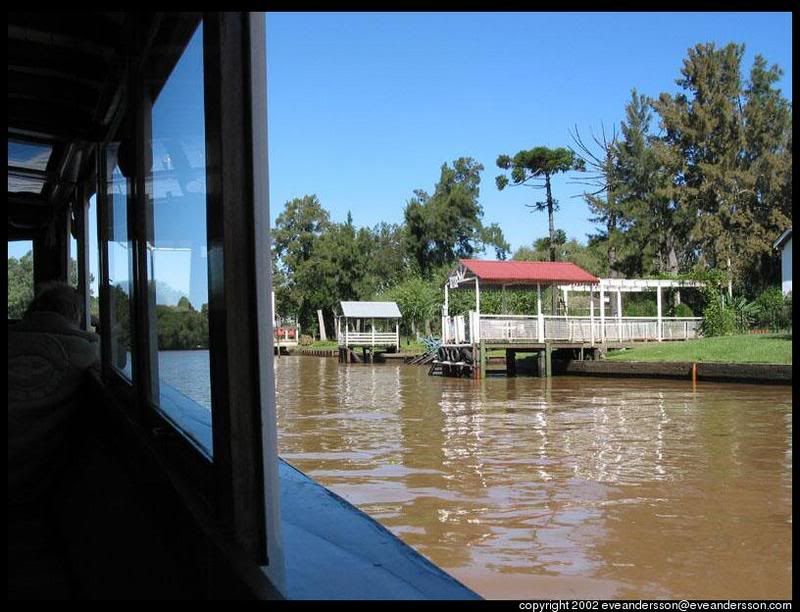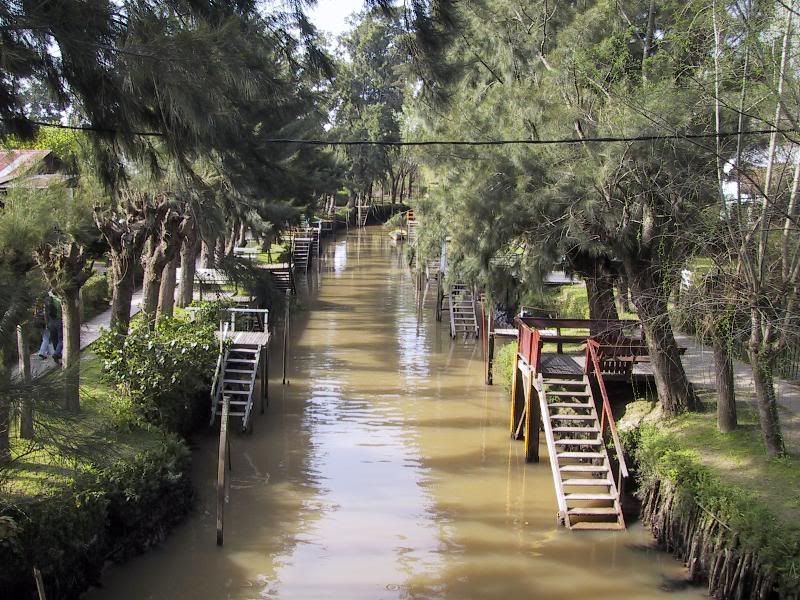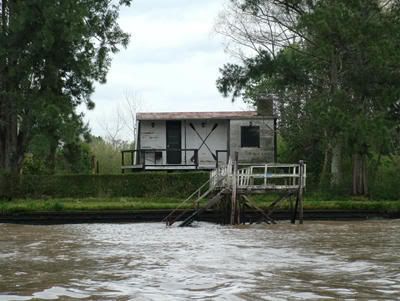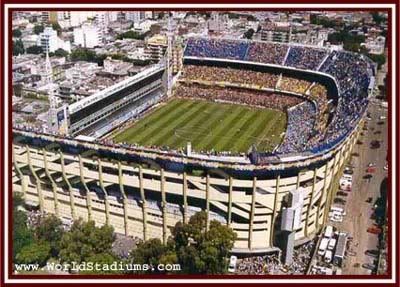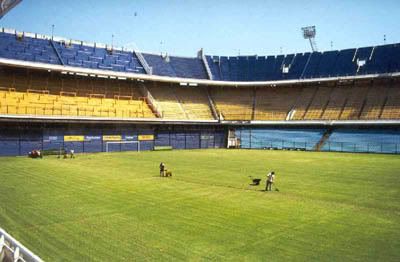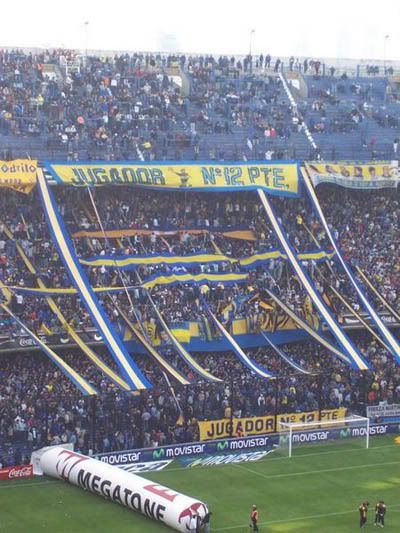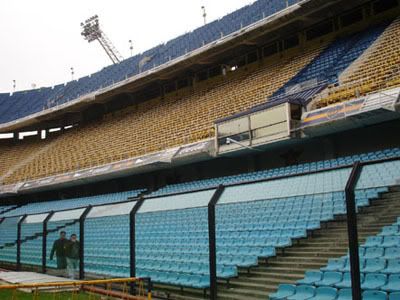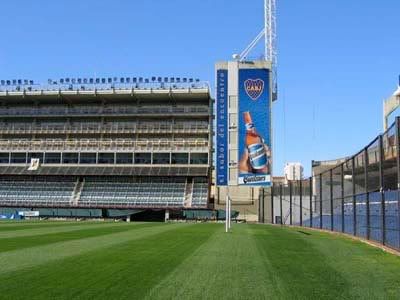Downtown - Buenos Aires
The area of the city referred to as “Downtown” or “Centro” is composed of portions of the Monserrat, San Nicolás and Balvanera neighborhoods. This section of the city is essentially a financial and commercial district, with a large concentration of banks, offices, businesses, and hotels. This large zone of the city includes a wide variety of activities to entertain all tastes.
Compared with the daytime bustle, there is much less nightlife, but nonetheless, the neighborhood has plenty of bars, restaurants, movie theaters, and other entertainment facilities which remain open practically all night long, primarily located on Lavalle Street and Corrientes Avenue. Among many other attractions, visitors will find places of tourist interest such as the city hall known as the “Cabildo,” the government house (Casa Rosada), the Plaza de Mayo, the cathedral, the “Manzana de las Luces”, the Colón theater, the obelisk, and the national congress. The main streets in the area are the famous 9 de Julio Avenue, Corrientes Avenue, Avenida de Mayo, and the pedestrian streets, Florida and Lavalle.
We recommend visiting:
Plaza de Mayo
Surrounded by the streets Balarce, H. Yrigoyen, San Martín, and Bolivar, this is where the city was born, and where the most important historical events have taken place since the revolution of May, 1810 until the present days. In the center of the plaza visitors will find the Pyramid of Mayo and the monument to Manuel Belgrano.
Government House “Casa Rosada”
Balcarce 50. Tel.: 4344-3600. Guided tours Monday through Friday at 5:00pm (Fridays in English). If interested, visitors should present identification and sign up beforehand in the Museum of the Casa Rosada at Hipólito Yrigoyen 219. Tel.: 4344-3804. Monday through Friday 10:00am to 6:00pm, Sunday 2:00pm to 6:00pm. Guided tours of the museum Monday through Friday 11:00am and 4:00pm, Sunday 3:00pm and 4:30pm.
Florida and Lavalle pedestrian streets:
During the weekdays on Florida St., visitors can immerse themselves in the rhythm of the “porteña” city. With numerous street artists, banks, shopping galleries, cafes, and shops, this pedestrian street bustles with life throughout the entire day. The perpendicular Lavalle St. is a traditional pedestrian mall lined with historic movie theaters, a bingo hall, several restaurants, and arcades.
Manzana de las Luces (Block of Lights)
Perú 272 Tel.: 4331-9534 Guided tours:
1. Who built the Block of Lights, and how was it constructed? In this tour, the different construction methods used between the 17th and 20th centuries are shown. Friday and Sunday at 4:00pm. Meets at Perú 272. Cost: $3.50 2. Primitive look of the University of Buenos Aires, National College of Buenos Aires, and Tunnels from the 18th century. Saturday at 3:00pm. Meets at Perú 272. Cost: $3.50. 3. Casa de Rentas of the era of the Vice-roy Vértiz and visit to the tunnels of the 18th century. Sunday at 3:00pm. Meets at Perú 272. Cost: $3.50. 4. Church and Cloister of San Ignacio, Procuracy of the Jesuit Missions, and visit to the tunnels of the 18th century. Sunday at 5:00pm. Meets at Perú 272. Cost: $3.50. 5. Free Guided Tours. Thirty to forty minutes, visiting the tunnels of the 18th century, the Patio of Procuratorship, and the “Mercado de las Luces” (antique and artisan market). Tuesday at 4:30pm and Friday at 1:30pm. Meets at Perú and Alsina.
Teatro Colón
Libertad 621 Tel.: 4378-7100 Guided tours from Monday to Friday every hour between 10:00am and 5:00pm. Meets at Toscanini 1180 (Toscanini and Viamonte). Tel.: 4378-7133. Cost: $5.00


